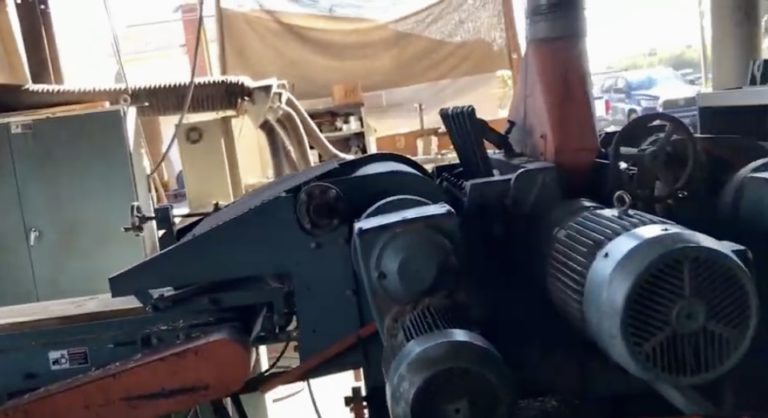Hardwood Lumber Planing
Planing hardwood lumber from rough seasoned boards into finished dimensional thickness is key to precision wood milling. Our planers produce a glass-like finish. At our Fontana, California mill, the primary machine we use is a Newman Whitney planer.
Our large Newman Whitney planer handles opposing grains without tear-out. We mill many dense hardwoods, both domestic and exotic so the precision knife cutters are key to a smooth mirror-like lumber finish.
In our opinion, Newman Whitney makes the best thickness planers for professional woodworkers and millwork applications. DIY’ers have many good options for smaller planers. However, when a large volume of wood needs planing quickly and consistently, a commercial planing machine is the best option.
What Does a Wood Planer Do?
Wood planers even out lumber into a board with a consistent uniform. Planed correctly, a hardwood lumber sits flat on two faces, removing rough spots & bark. However, the lumber needs to be flat without cup, bow or twist before planing.
Can a Lumber Planer Flatten Boards or Slabs?
Not well. Most hardwood lumber planers do not flatten as they plane. The reason is that the inbound lumber board is secured to the planer bed before the knives cut. Thus, a board with cup will be flatted by force to fit through the planer. Outbound, the planer bed releases the board where the cup returns. Additionally, in cases of severe cup, twist or bow, the lumber boards may actually break as a result of the planer bed force.
Planer Set Up to Flatten Boards
Planers can flatten lumber to some extent. However, this requires an unorthodox planer set-up. Basically, the inbound lumber is only secured to the planer bed tight enough to prevent it from moving. Thus, the lumber is not forced flat. However, this method produces mixed results, at best. Certainly, it will not remove major cups/twists/bows in wood. The better option is a jointer.
Planer vs Jointer?
A jointer flattens lumber, wood and slabs. Unlike a planer, it creates flat edges on boards. Jointer knives produce a planer-type finish. However, jointers thicknesses are set based on removing thickness rather than final thickness. For example, a jointer flattens a board by removing 1/64- 1/8″ per pass. Whereas planer knives are set to achieve a desired net thickness, without regard to flattening.


